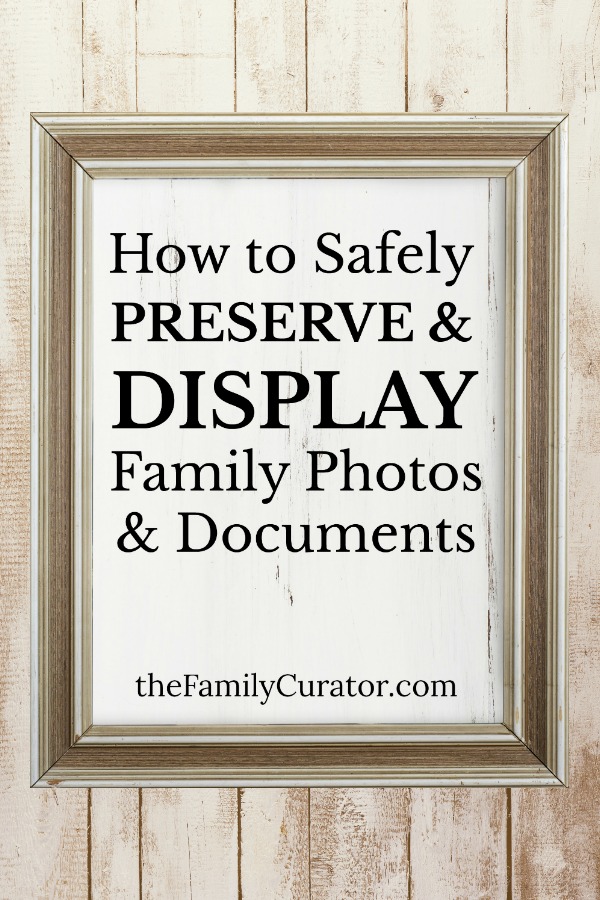 How can I preserve early 20th century photos and documents and safely display them in my apartment?
How can I preserve early 20th century photos and documents and safely display them in my apartment?
Kesia wants to enjoy sharing and displaying family history keepsakes in her home, yet she knows that 100 year old paper artifacts need special care. What steps can she take to protect her treasures and enjoy them too?
This week’s question from the Ask the Curator Inbox is one I hear often. Genealogists don’t want to just research and preserve our family history, we want to live with it too!
Preserve the Past
The best way to preserve your paper artifacts and photographs is to store them in acid-free archival folders and/or boxes in a cool location free from changes in temperature and humidity, pests, dust, and light. I recommend true archival storage containers manufactured for libraries and archives by archival suppliers like Gaylord Archival and Hollinger, available through Amazon (affiliate link) or in bulk from the manufacturer.
Of course, you can’t enjoy seeing old photos and papers every day when they’re tucked away in archival boxes. Two good choices for displaying your treasures, and preserving them for the next generation are:
- Frame or mount the items in museum-type archival display frames and cases; or
- Preserve the originals in archival storage and display a reproduction made from a digital copy.
Archival Framing
Most photo and document frames are made with inexpensive cardboard and wood, high-acid materials that speed deterioration of paper and photos. Art framers specializing in archival framing use high-quality acid-free mat board and backing and sealed wood or metal frames. Depending on size, archival framing can be quite expensive.
If you goal is to preserve and display your original keepsakes, you’ll need to have the items framed with only archival materials, including UV light-filtering glass, and display them in an location away from direct light, heat, or humidity. Paper or photos should be attached to the acid-free backing with archival hinges, not tape or glue. Acid-free mat board should be used to keep the item from touching the glass or plexiglass.
Displaying Reproductions
Digital prints made from scanned photos or documents are simple to frame and enjoy with no risk of damage to the original. Use a flatbed scanner for the best reproduction quality and scan at original size, 600 dpi, full color. To keep any imperfections on your original, reprint as-is in the same size on the same type of paper. Or, use photo editing software to restore the image to look brand new once again.
Frame and display the print in any frame in any location knowing that you can reprint new copies if needed. Or print the digital image on metal, wood, or fabric for a completely different look. Online photo services like Shutterfly and Mixbook offer all kinds of gifts and display ideas.
Whether you display your family history keepsakes as originals carefully preserved in archival frames or as reproductions on wall posters, remember to make notes on the reverse side to identify the people and events shown and share how you came to own the item.
You’ll find specific advice for archiving and preserving photos, documents, and memorabilia in my book How to Archive Family Keepsakes (Family Tree Books, 2012). This step-by-step guide includes tips for organizing, purging, and preserving family heirlooms, photos, and papers.
Thank you for supporting The Family Curator’s free informational website by using the affiliate links mentioned in this article. I only recommend products I have used and found helpful.







I have included your blog in INTERESTING BLOGS in FRIDAY FOSSICKING at
http://thatmomentintime-crissouli.blogspot.com.au/2017/08/friday-fossicking-4th-august-2017.html
Thank you, Chris